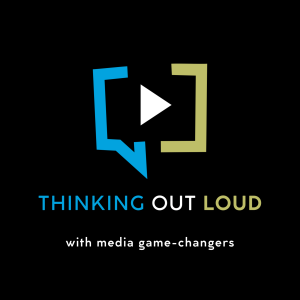
At the Word of Mouth Marketing Association (WOMMA), where I serve on the board, we are keenly aware that a new premium is being put on research that can help marketers to prove the impact and business outcomes associated with investment in social media and word-of-mouth marketing.
To help our members and other marketers, WOMMA recently compiled and published a Measurement and Metrics Best Practices Guidebook. It is an educational resource for marketers who wish to understand the different types of metrics and measurement that should be considered, key considerations for their use, and specific examples of their applications.
One thing that the Guidebook makes clear is that while it’s easy to say “we need research,” there is in fact no “one size fits all” research solution, nor is there “one right way” to measure WOM and social media. Research must be tied to a business’s individual objectives. Questions that you must ask yourself before designing and commissioning research include:
- What is the purpose of the research: Is it for strategic input into your planning? Tactical decision making? Monitoring the effectiveness of a current or planned program?
- Where is the marketing activity taking place? Is it online (e.g., on social networking sites, blogs, etc)? Offline (e.g., at events, through the use of WOM agents or brand evangelists, etc)? Is it about measuring the WOM impact of “traditional marketing” such as advertising or PR?
- Who is the target of your marketing efforts? Online influencers? Customers? Prospects? The total population?
The answers to these questions will guide the type of research that is most appropriate and will avoid the pitfall of spending time and money measuring things that don’t provide the answers that are required to make sound judgments.
Here are a few of the types of research metrics that are featured in the Guidebook and provide some of the most important building blocks for measurement and evaluation.
Conversation volume and share: One of the basic building blocks of any research effort, conversation volume measures the overall amount of word of mouth about a product, service, or brand (or topic such as the environment or health/nutrition). It is the word of mouth equivalent of sales volume, or consumption, or audience size. Measurement of conversation share looks at a group of brands and the amount of conversation each enjoys versus the total for all the brands combined. It is the equivalent of market share analysis.
Reach: Whereas conversation volume represents the numbers of messages or outputs via word of mouth or social media, reach measures the number of people who have been exposed to word of mouth content, either directly (via the sender of the word of mouth message) or indirectly (via the retransmission of a message to a second or third generation of recipients).
Sentiment analysis: An analysis of a speaker’s tone when talking (or posting) about a brand or product (e.g., positive or negative), and the intensity of opinion.
Content: Monitoring what exactly is being said about a brand during online or offline conversation. Verbatim comments can be read as qualitative insight into conversations in which we look for things like passion words (love/hate, fantastic/awful, etc.); or unexpected uses for products of a product or shortcomings you weren’t focused on; or the “everyday” language that consumers use when talking about your brand to help with marketing messages or keywords.
Advocacy: For many brands, the goal of word of mouth or social media is not just to get talked about (although that’s an important starting point) but rather to galvanize consumers to advocate for them. Advocacy measurement identifies all of the different ways people verbalize their advocacy, isolating advocacy terms and emotions from general positive sentiment (e.g., I might like five different car brands but will only tell my family and friends to buy one of them). It also explores who is doing the advocating to help profile the dynamics of brand advocates.
Actions taken: To help determine the extent to which positive word of mouth or brand advocacy links to behavior. The behaviors measured should be tied to your marketing goal. Are you trying to drive sales, or visits to a website, or sharing of a coupon, or forwarding of a link.
ROI: While a goal for many, there remains no singular approach by which to measure the ROI of social media or word of mouth — although progress is being made. To underscore the challenges, consider what the vice president of global interactive marketing at Coca-Cola said recently: “Before you have ROI, you have to really understand how social media is driving your business . . . I can’t measure it in actual incremental sales because I’m not selling something online.” If ROI is important to you, it’s important to determine in advance of your marketing initiative what the formula for evaluation will be and to build the metrics for measurement in advance of launching the program. ROI for WOM should ideally mirror the way your organization measures ROI for other marketing initiatives so that ROI for social media/WOM can be evaluated relative to the ROI of other initiatives.
Ed Keller is chief executive officer of The Keller Fay Group.
Management guru Edward Deming once said, “In God we trust, all others bring data.” Measurement and metrics are critical to the success of word of mouth and social media marketing. Each year brings new needs, and new solutions.
 Network
Network

